Are your students struggling with the verb “to be”? We know how frustrating teaching this essential part of English grammar can be. But what if we told you there’s a way to make it fun and engaging?
This post shares over 22 verb-to-be activities that will transform your lessons. These games and exercises will help your students grasp the concept and enjoy learning.
By using these methods, you’ll see improved understanding and retention in your classroom. Ready to spice up your grammar lessons?
Let’s go through these exciting activities that will have your students mastering the verb “to be” in no time!
22+ Verb to Be Activities
1. Fill-in-the-Blanks
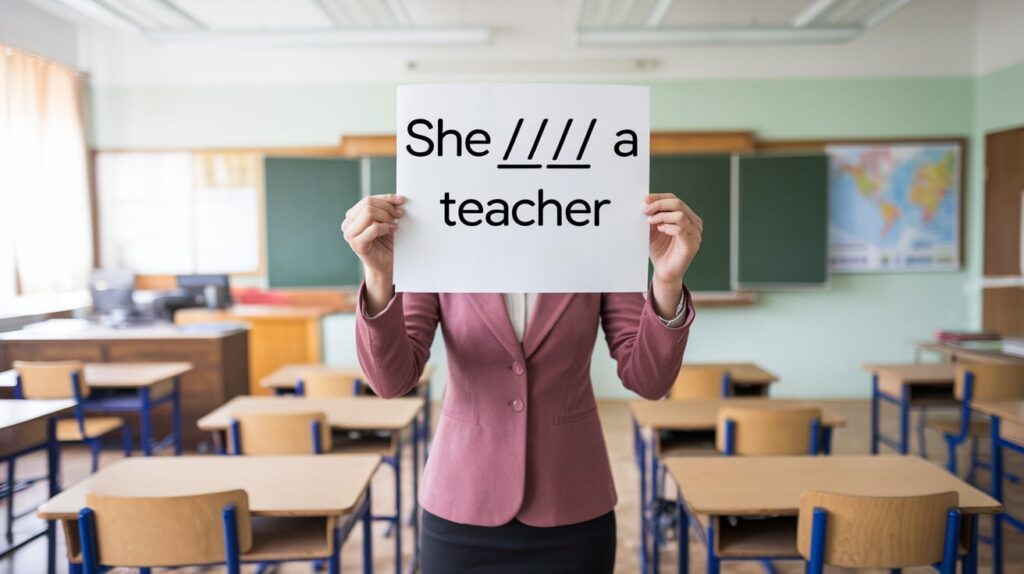
Fill-in-the-blanks is a classic activity that helps students practice the correct form of the “to be” verb in sentences. This activity can reinforce their understanding and application of these verbs in different contexts.
How to Play
- Prepare Sentences: Write down sentences with missing “to be” verbs. For example, “She ___ a teacher” or “We ___ happy.”
- Distribute Sheets: Hand out the sentences to the students.
- Complete the Sentences: Ask the students to fill in the blanks with the correct form of the verb “to be” (e.g., “She is a teacher” or “We are happy”).
- Review: Review the answers together, discussing why each form is used.
2. Verb to Be Bingo

The verb to Be Bingo is a fun and engaging game where students match the forms of the “to be” verb on their bingo cards with the clues provided by the teacher.
How to Play
- Create Bingo Cards: Design bingo cards with different forms of the “to be” verb (e.g., am, is, are, was, were).
- Prepare Clues: Prepare sentences that use the “to be” verbs, leaving the verb out for the students to guess.
- Call Out Clues: Read the clues individually, like “I ___ a student yesterday” (Answer: was).
- Mark the Cards: Students mark the correct verb form on their bingo cards.
- Win the Game: The first student to mark a complete row (horizontal, vertical, or diagonal) shouts “Bingo!” and wins.
3. Matching Game
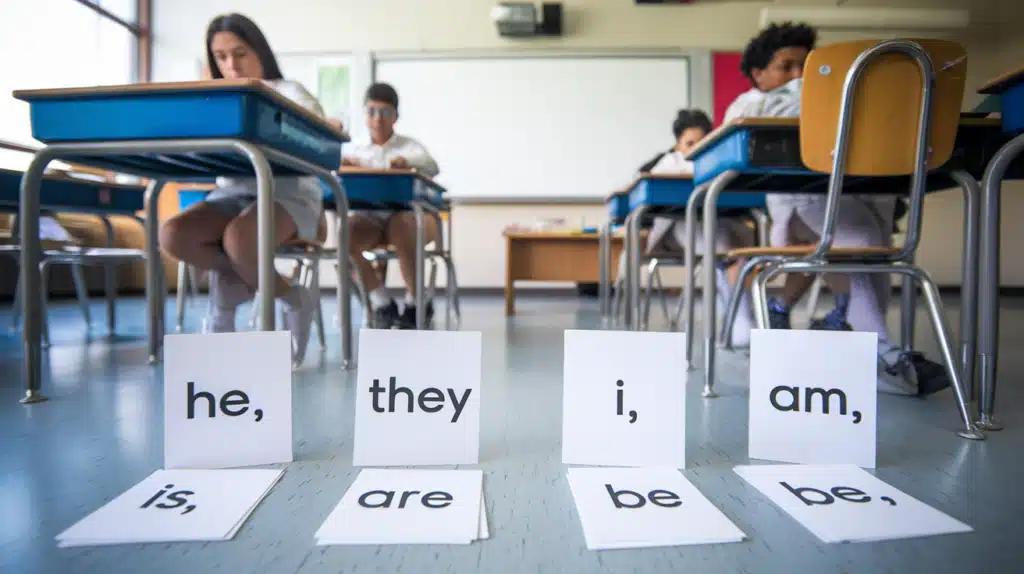
This activity involves matching subjects with the correct “to be” verb form, helping students reinforce their understanding of subject-verb agreement.
How to Play
- Create Cards: Prepare cards with subjects (e.g., He, They, I) and corresponding “to be” verbs (e.g., is, are, am).
- Distribute Cards: Shuffle and distribute the cards among students.
- Match the Pairs: Students work to match the subject cards with the correct “to be” verb cards.
- Discuss Matches: After matching, discuss each pair with the class to reinforce understanding.
4. Flashcards

Flashcards are a simple yet effective tool for memorizing the “to be” verb forms and their correct usage.
How to Play
- Prepare Flashcards: Create flashcards with subjects on one side (e.g., She, They, It) and the corresponding form of the “to be” verb on the other (e.g., is, are, is).
- Practice with Students: Show the subject side of the flashcard and ask students to say the correct “to be” verb form before revealing the answer.
- Repetition: Repeat this with different subjects to help students memorize the correct forms.
5. Role-Play
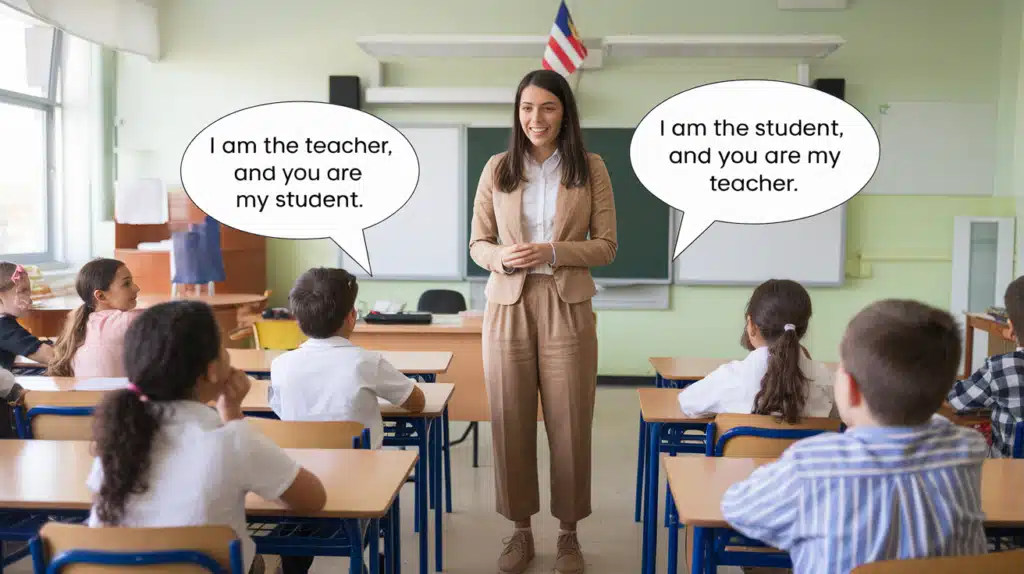
In this activity, students engage in role-plays that require them to use various forms of the “to be” verb in different scenarios.
How to Play
- Assign Roles: Assign different roles to students, such as a teacher and a student, a doctor and a patient, etc.
- Prepare Scenarios: Give each pair a scenario that requires them to use “to be” verbs in their dialogue (e.g., “I am a doctor, and you are my patient”).
- Perform the Role-Play: Students perform the role-play in front of the class, using the correct “to be” verb forms.
- Feedback: Provide feedback on their usage of the verbs and correct any mistakes.
6. Sentence Construction
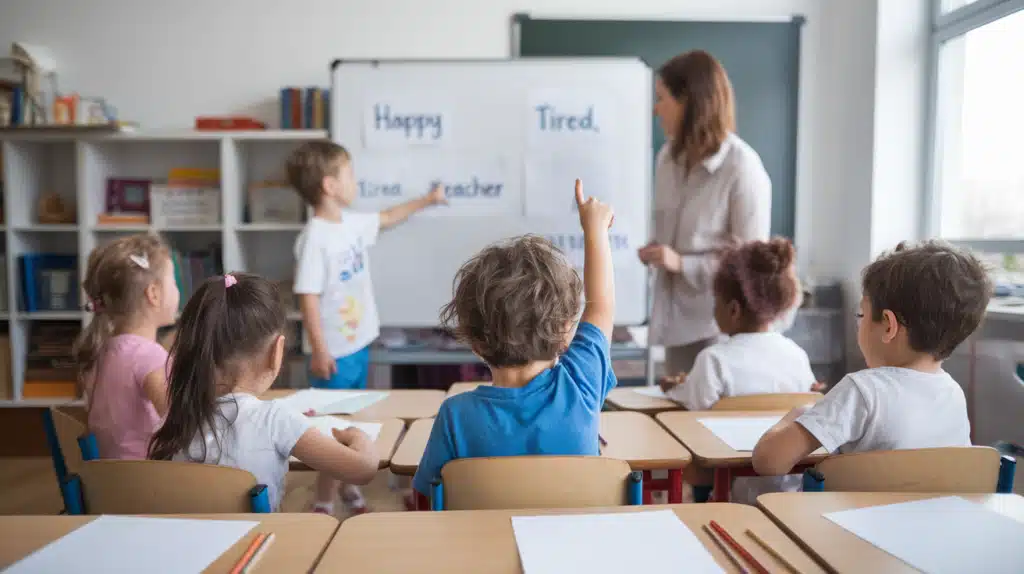
This activity encourages students to construct sentences using the “to be” verb, fostering creativity and deeper understanding.
How to Play
- Provide Words: Give students a list of words (e.g., “happy,” “tired,” “teacher,” “students”) that they can use in their sentences.
- Construct Sentences: Ask students to create sentences using these words with the appropriate form of the “to be” verb (e.g., “She is happy” or “They are students”).
- Share and Discuss: Have students share their sentences with the class and discuss why they chose each form of the “to be” verb.
7. Verb to Be Puzzles
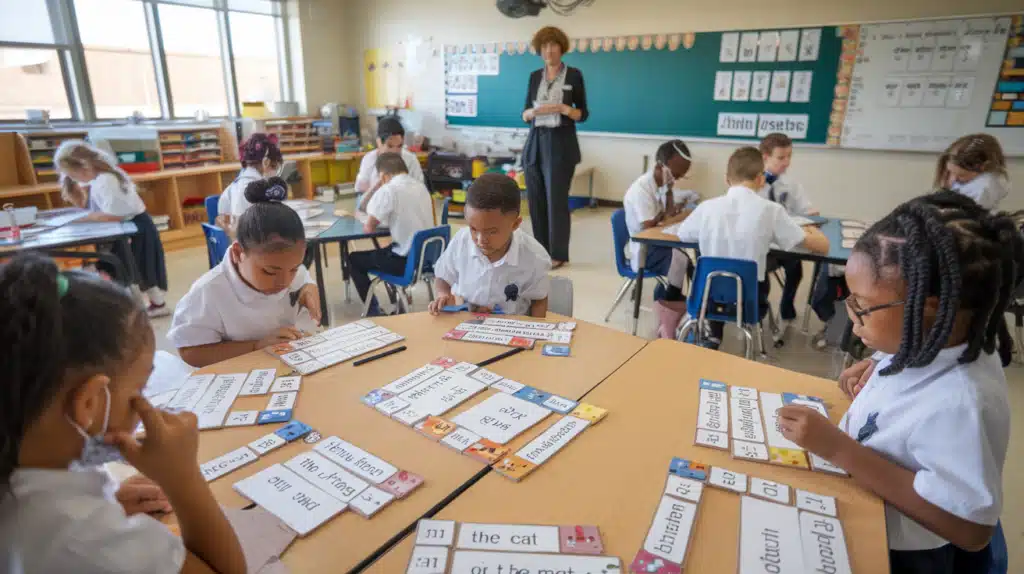
Verb-to-be Puzzles are a creative way for students to piece together sentences using the correct form of the “to be” verb.
How to Play
- Create Puzzle Pieces: Prepare puzzle pieces with parts of sentences on each piece (e.g., “The cat,” “is,” “on the mat”).
- Distribute Puzzles: Give each student or group a set of puzzle pieces.
- Assemble the Sentences: Students assemble the puzzle pieces to form correct sentences using “to be” verbs.
- Check and Review: Review the assembled sentences with the class and provide feedback.
8. Mini Dialogues
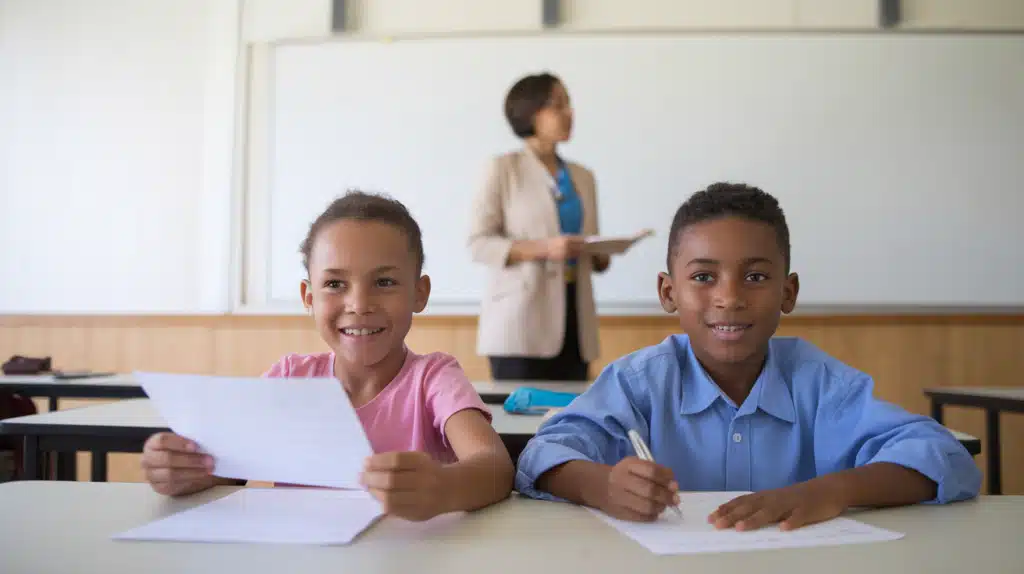
Mini Dialogues help students practice “to be” verbs in conversational contexts, making learning more interactive.
How to Play
- Write Dialogues: Prepare short dialogues that use various forms of the “to be” verb (e.g., “Are you ready?” “Yes, I am ready”).
- Assign Partners: Pair up students and assign them a dialogue.
- Practice: Have the pairs practice their dialogues using the correct “to be” verbs.
- Perform: Ask each pair to perform their dialogue in front of the class, focusing on correct verb usage.
9. Board Game

A board game designed around the “to be” verb can make learning this essential verb fun and competitive.
How to Play
- Create a Board: Design a board with spaces that require students to use a “to be” verb correctly in a sentence to advance.
- Prepare Cards: Make cards with sentence prompts that students must complete using the correct form of the “to be” verb.
- Roll the Dice: Students roll a dice and move their piece on the board. When they land on a space, they pick a card and complete the sentence.
- Win the Game: The first student to reach the end of the board wins the game.
10. Story Creation

Story Creation allows students to use their creativity to form stories incorporating different “to be” verb forms.
How to Play
- Assign a Theme: Give students a theme or a few prompts to start their stories.
- Write Stories: Students write short stories using various forms of the “to be” verb throughout the narrative (e.g., “Once upon a time, there was a king who was very wise”).
- Share Stories: Have students read their stories aloud, paying attention to correctly using the “to be” verbs.
- Discuss: Discuss using “to be” verbs in each story, highlighting correct usage and correcting mistakes.
11. Verb to Be Quiz
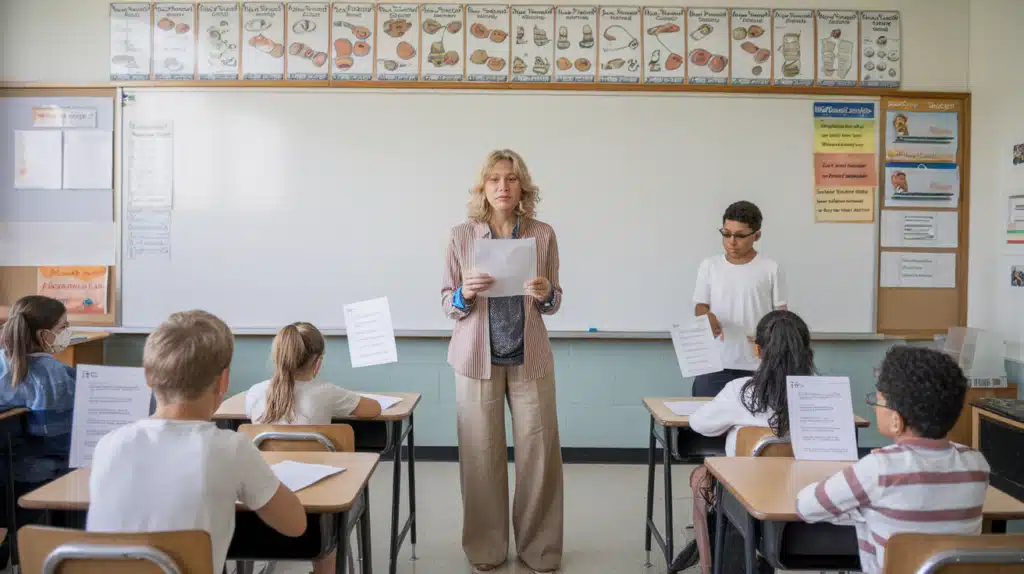
A quiz on the “to be” verb helps reinforce students’ understanding by testing their knowledge in a fun and competitive environment.
How to Play
- Prepare Quiz Questions: Create a set of quiz questions that require the correct form of the “to be” verb (e.g., “He ___ my friend”).
- Divide into Teams: Split the class into teams for a group quiz or have students take the quiz individually.
- Answer the Questions: Ask each team or student to answer the questions using the correct form of the “to be” verb (e.g., “He is my friend”).
- Score and Review: Score the quiz and review the answers with the class, explaining any errors.
12. Correct the Sentence

In this activity, students correct sentences that contain errors in the use of the “to be” verb, enhancing their editing and grammar skills.
How to Play
- Write Incorrect Sentences: Prepare sentences with incorrect “to be” verbs (e.g., “She are a doctor”).
- Distribute the Sentences: Give these sentences to students on a worksheet or on the board.
- Correct the Mistakes: Ask students to identify and correct the mistakes (e.g., “She is a doctor”).
- Discuss the Corrections: Discuss the corrected sentences and why the corrections are necessary.
13. Verb to Be Song

Learning through music, students can memorize and practice “to be” verbs by singing along to a song that incorporates them.
How to Play
- Choose or Create a Song: Find a song or create one that includes the forms of the “to be” verb (e.g., “I am, you are, he is”).
- Teach the Song: Teach the lyrics to the students, emphasizing the “to be” verbs.
- Sing Together: Have the class sing along, reinforcing the correct usage of “to be” verbs through repetition.
- Discuss the Lyrics: After singing, discuss the song’s lyrics and how the “to be” verbs are used.
14. Picture Description
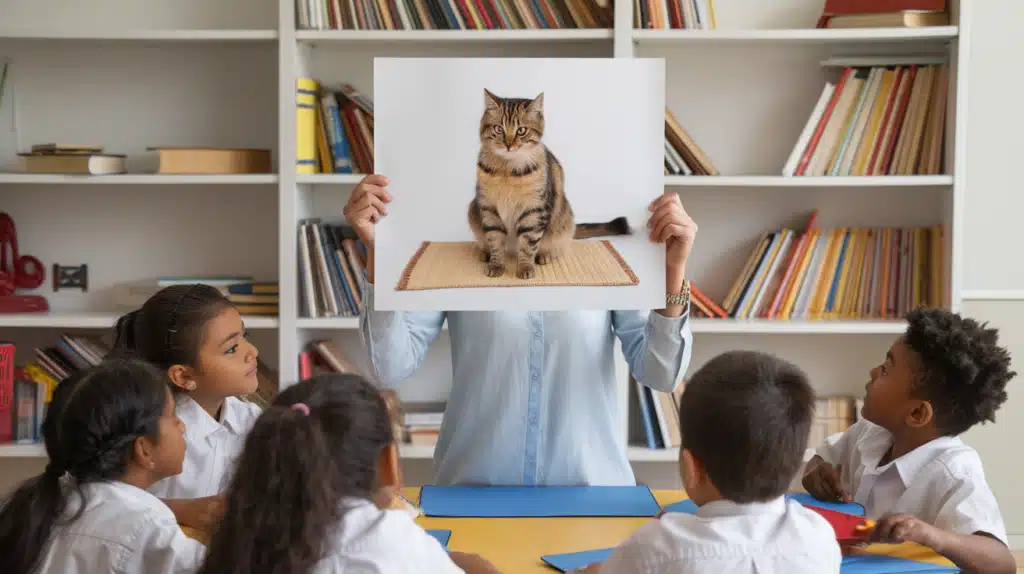
This activity involves describing pictures using the “to be” verb, which helps students practice their descriptive language skills.
How to Play
- Select Pictures: Choose or create a set of pictures that depict various scenarios (e.g., a cat on a mat, a family at the beach).
- Describe the Pictures: Show the pictures to students and ask them to describe what they see using “to be” verbs (e.g., “The cat is on the mat”).
- Share Descriptions: Have students share their descriptions with the class.
- Review: Discuss each description, focusing on correctly using “to be” verbs.
15. Verb to Be Worksheets
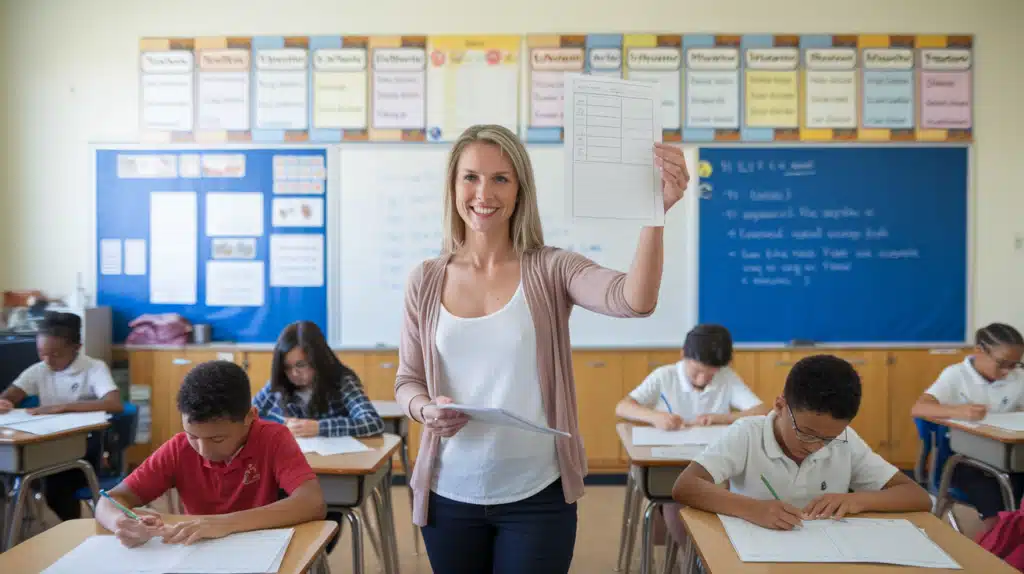
Worksheets filled with “to be” verb exercises provide students with structured practice in a written format.
How to Play
- Prepare Worksheets: Create worksheets with various exercises that focus on the “to be” verb (e.g., fill-in-the-blank sentences, sentence rewriting).
- Distribute to Students: Hand out the worksheets to students.
- Complete the Exercises: Students complete the worksheets individually or in pairs.
- Review Answers: Review the answers as a class, discussing any mistakes and reinforcing correct usage.
16. Yes/No Questions
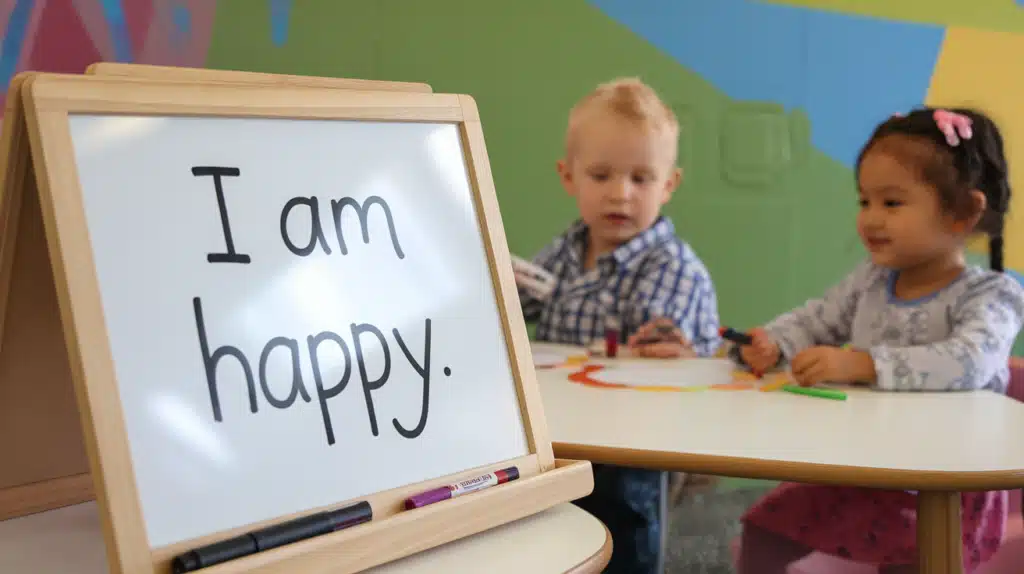
This activity teaches students how to form and respond to yes/no questions using the “to be” verb.
How to Play
- Explain the Concept: Teach students how to form yes/no questions with the “to be” verb (e.g., “Are you happy?”).
- Create Questions: Ask students to come up with their own yes/no questions using “to be” verbs.
- Ask and Answer: Pair up students and have them ask each other their questions, responding with “Yes, I am” or “No, I’m not,” etc.
- Discuss: Discuss the importance of word order and verb forms in forming yes/no questions.
17. Verb to Be Charades
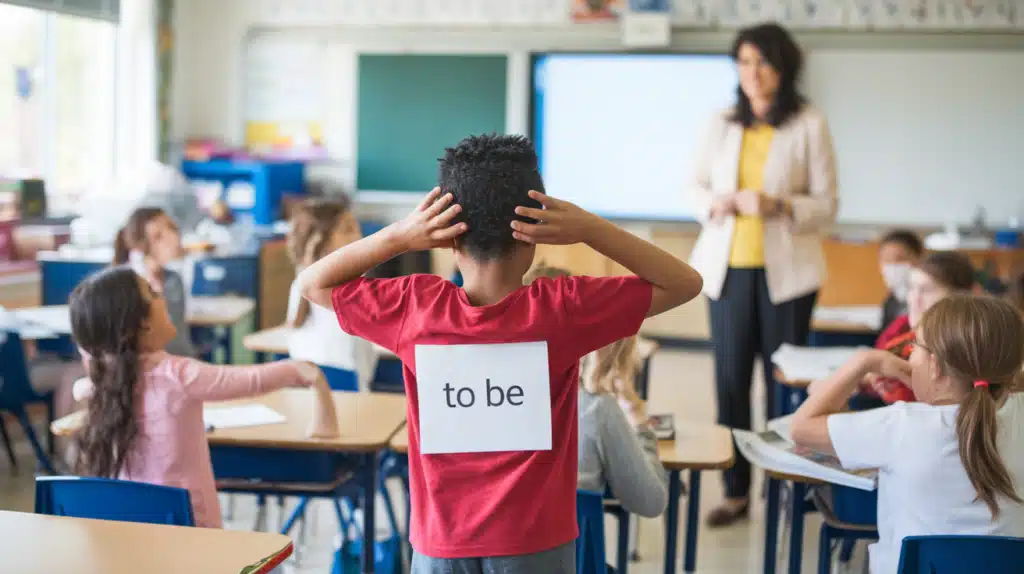
The verb to Be Charades combines acting and guessing to reinforce students’ understanding of “to be” verbs in an interactive way.
How to Play
- Write Down Actions: Write sentences using “to be” verbs (e.g., “He is running”) on slips of paper.
- Choose a Student: A student picks a slip and acts out the sentence without speaking.
- Guess the Sentence: The rest of the class guesses the sentence, including the correct “to be” verb (e.g., “He is running”).
- Rotate Turns: Rotate turns so each student has a chance to act and guess.
18. Verb to Be Posters

Creating posters with rules and examples of “to be” verbs helps reinforce the learning visually and creatively.
How to Play
- Assign Groups: Divide the class into small groups.
- Create Posters: Ask each group to create a poster that illustrates the different forms of the “to be” verb, with examples (e.g., “I am happy,” “You are tired”).
- Present Posters: Each group presents their poster to the class, explaining the rules and examples they included.
- Display: Display the posters around the classroom for ongoing reference.
19. Peer Teaching

In this activity, students teach each other about the “to be” verbs, reinforcing their own understanding through teaching.
How to Play
- Assign Topics: Assign different forms of the “to be” verb to pairs or small groups of students (e.g., “is,” “are,” “was”).
- Prepare a Lesson: Each pair or group prepares a mini-lesson to teach the rest of the class about their assigned verb form.
- Teach the Class: Students teach their peers, using examples and explanations to help everyone understand.
- Feedback: Provide feedback on their teaching and correct any mistakes.
20. Verb to Be Ladder
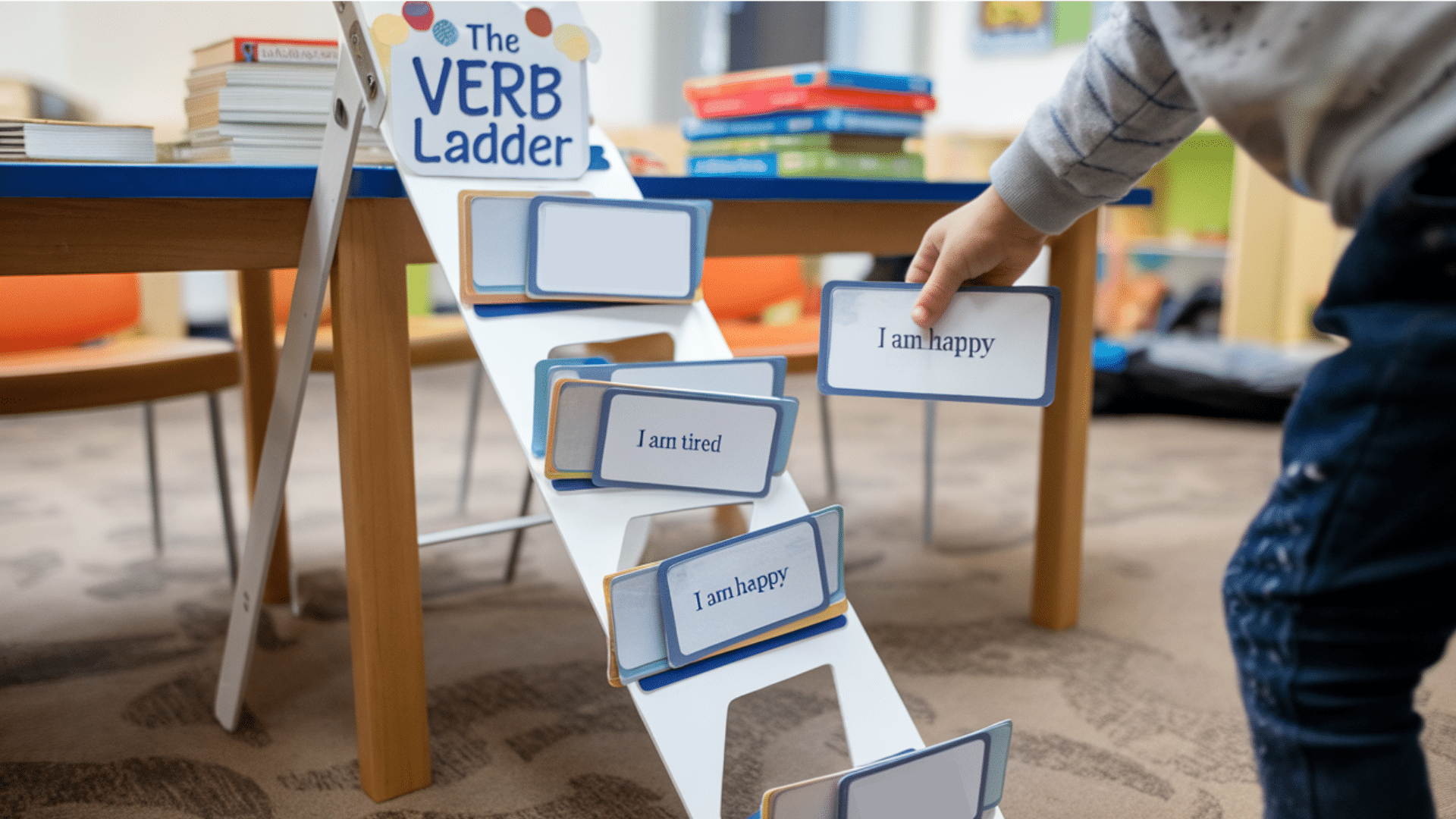
The Verb to Be Ladder is a game where students advance up a ladder by correctly using the “to be” verb in sentences.
How to Play
- Create a Ladder Chart: Draw a ladder with rungs representing different sentence challenges using “to be” verbs.
- Prepare Sentence Prompts: Have sentence prompts at each rung of the ladder (e.g., “I ___ (to be) tired”).
- Advance by Answering: Students answer the prompt correctly (e.g., “I am tired”) to move up the ladder.
- Reach the Top: The first student to reach the top of the ladder wins the game.
21. Classroom Survey

Conducting a classroom survey with “to be” verbs allows students to practice their real-life questioning and answering skills.
How to Play
- Create Survey Questions: Have students create survey questions using “to be” verbs (e.g., “Are you hungry?”).
- Survey the Class: Students walk around the classroom, asking their survey questions to their peers.
- Record Responses: They record the answers using the correct form of the “to be” verb.
- Share Results: Share and discuss the results with the class, focusing on using “to be” verbs.
22. Story Retelling

Retelling a known story using “to be” verbs helps students practice verb usage in a narrative context.
How to Play
- Choose a Story: Select a well-known story or fable.
- Retell the Story: Ask students to retell the story in their own words, using correct “to be” verbs throughout (e.g., “The tortoise was slow, but the hare was fast”).
- Share Retellings: Have students share their retellings with the class.
- Discuss: Discuss using “to be” verbs in the retellings, correcting any errors.
23. Verb to Be Crossword
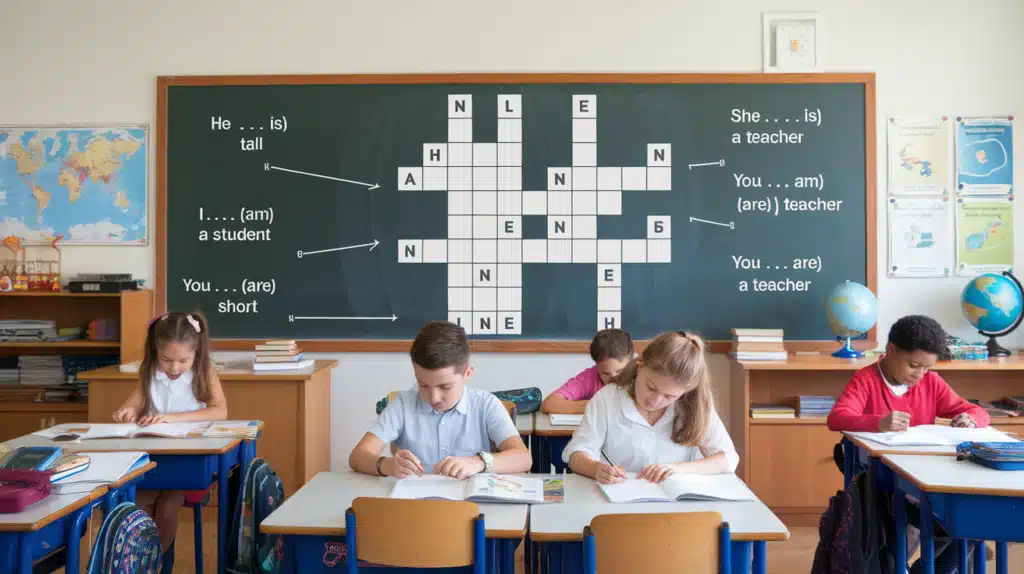
A crossword puzzle focused on the “to be” verbs is a great way for students to engage with grammar in a fun and challenging format.
How to Play
- Create a Crossword: Design a crossword puzzle where the clues are sentences missing the “to be” verb (e.g., “He ___ (is) tall”).
- Distribute the Crossword: Give students the crossword to complete.
- Fill in the Blanks: Students fill in the blanks in the crossword with the correct “to be” verb form.
- Review Together: Review the crossword as a class, discussing any mistakes and why the correct form was needed.
24. Sentence Transformation
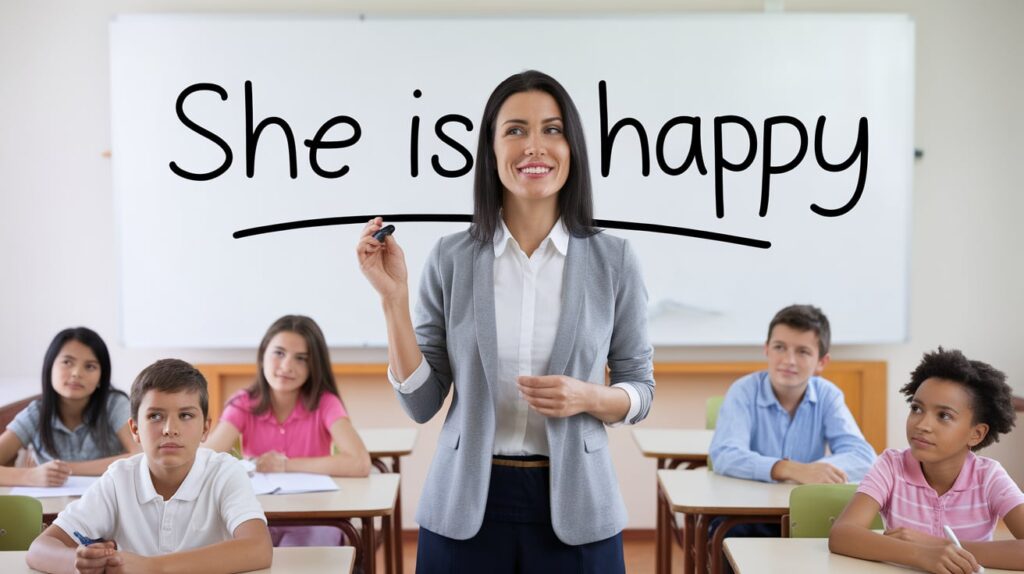
This activity involves transforming sentences from one tense to another using the “to be” verb, helping students understand tense changes.
How to Play
- Write Sentences: Prepare sentences in a specific tense (e.g., present tense: “She is happy”).
- Transform the Tense: Ask students to change the sentences to a different tense using the correct form of the “to be” verb (e.g., past tense: “She was happy”).
- Share Transformations: Have students share their transformed sentences with the class.
- Discuss the Changes: Discuss how the “to be” verb changes with different tenses.
Conclusion
Teaching the verb “to be” doesn’t have to be a tedious task. With these engaging verb-to-be activities, you can transform grammar lessons into exciting learning experiences that students eagerly anticipate.
These verb-to-be activities help your students grasp this fundamental concept with ease and enthusiasm by incorporating a variety of games, exercises, and interactive methods.
Remember, when presented creatively, grammar can be an enjoyable aspect of language learning. So, don’t hesitate to experiment with these verb-to-be activities in your next lesson.
By making verb-to-be activities a regular part of your curriculum, you’re not just teaching grammar – you’re fostering a love for language learning that can last a lifetime.
Happy Teaching!




